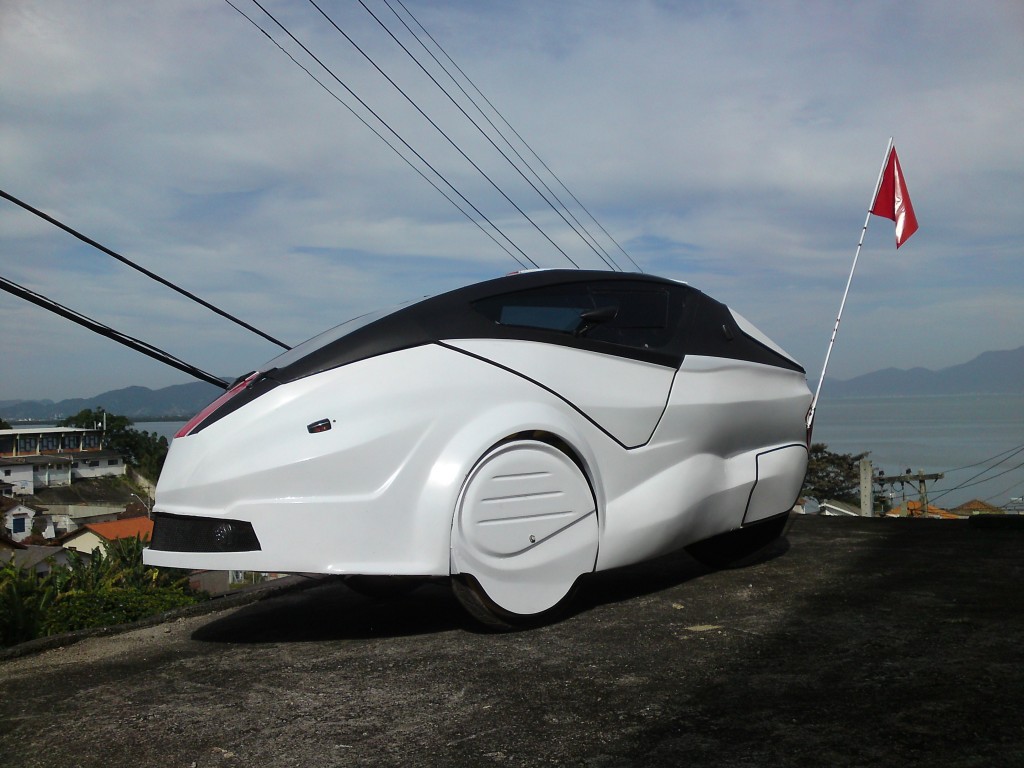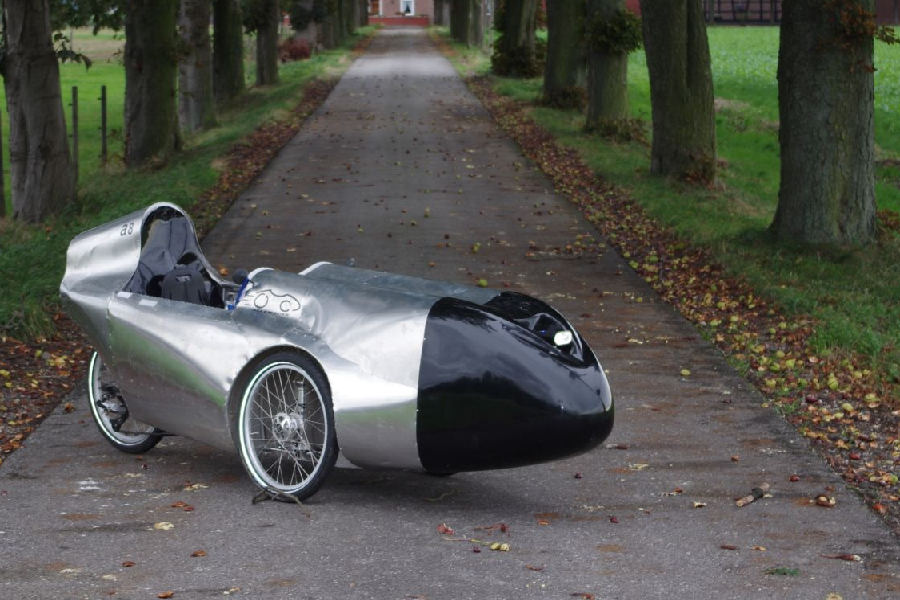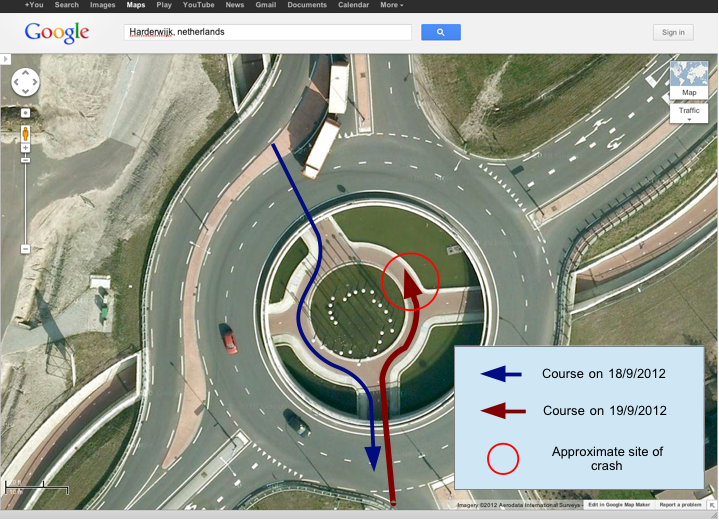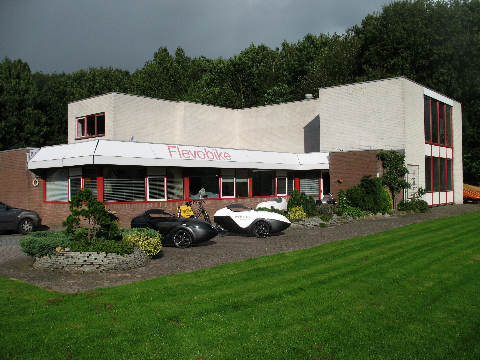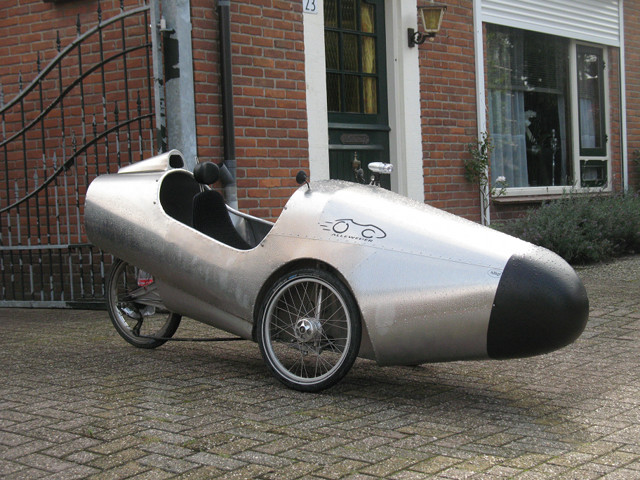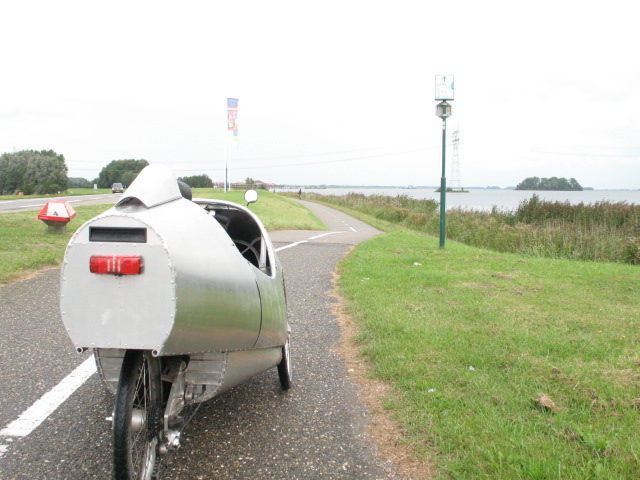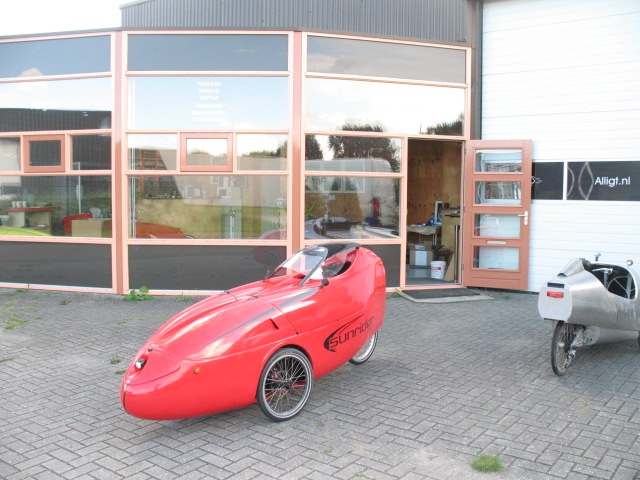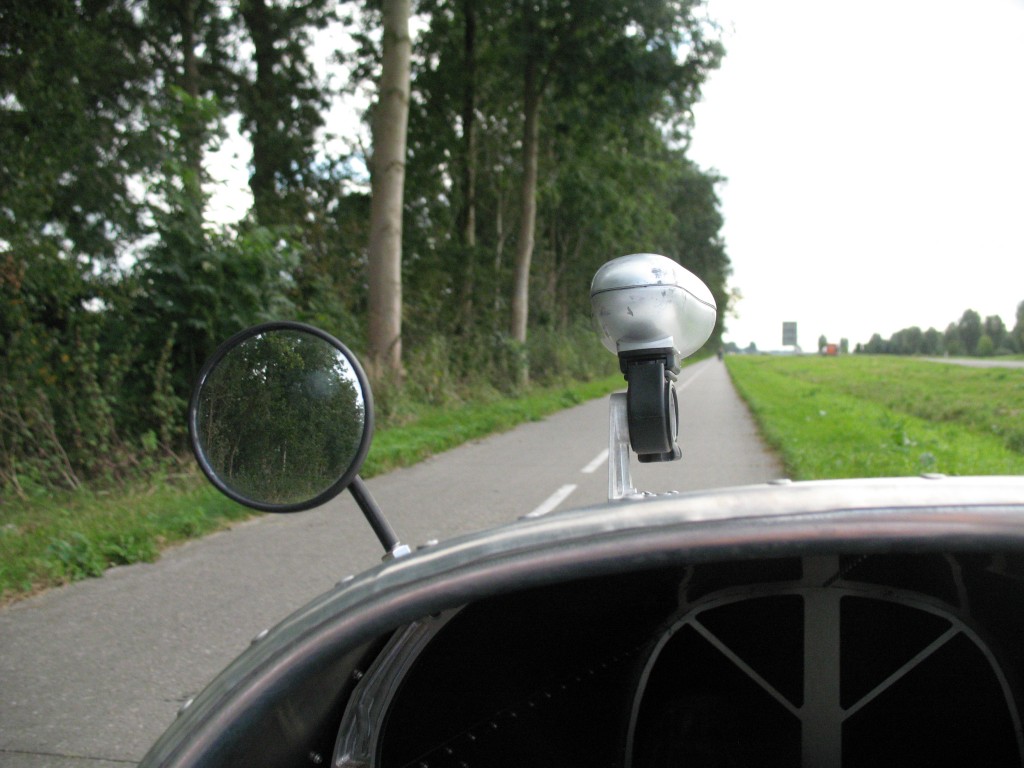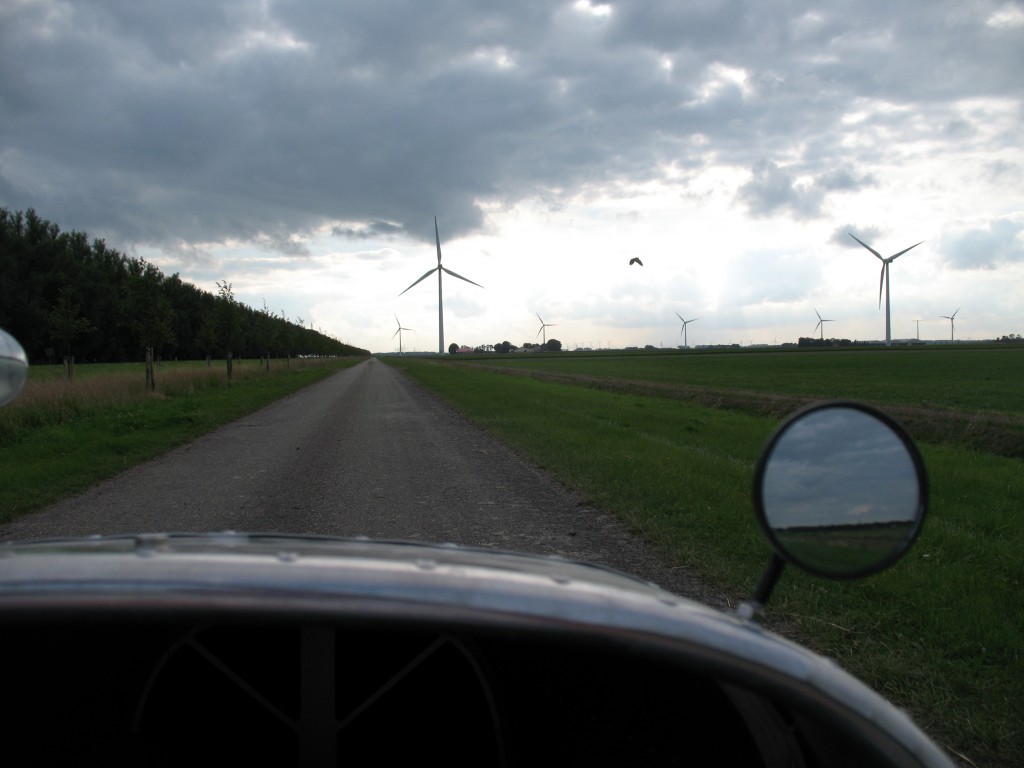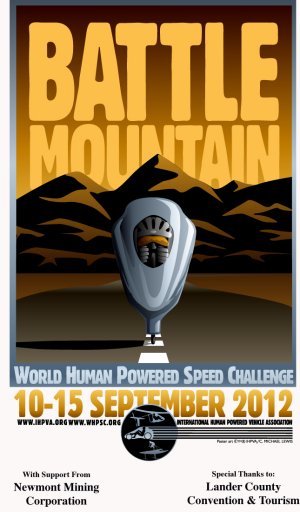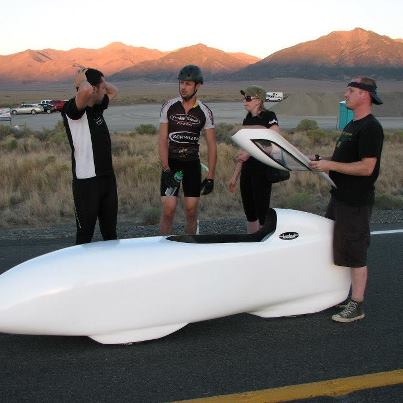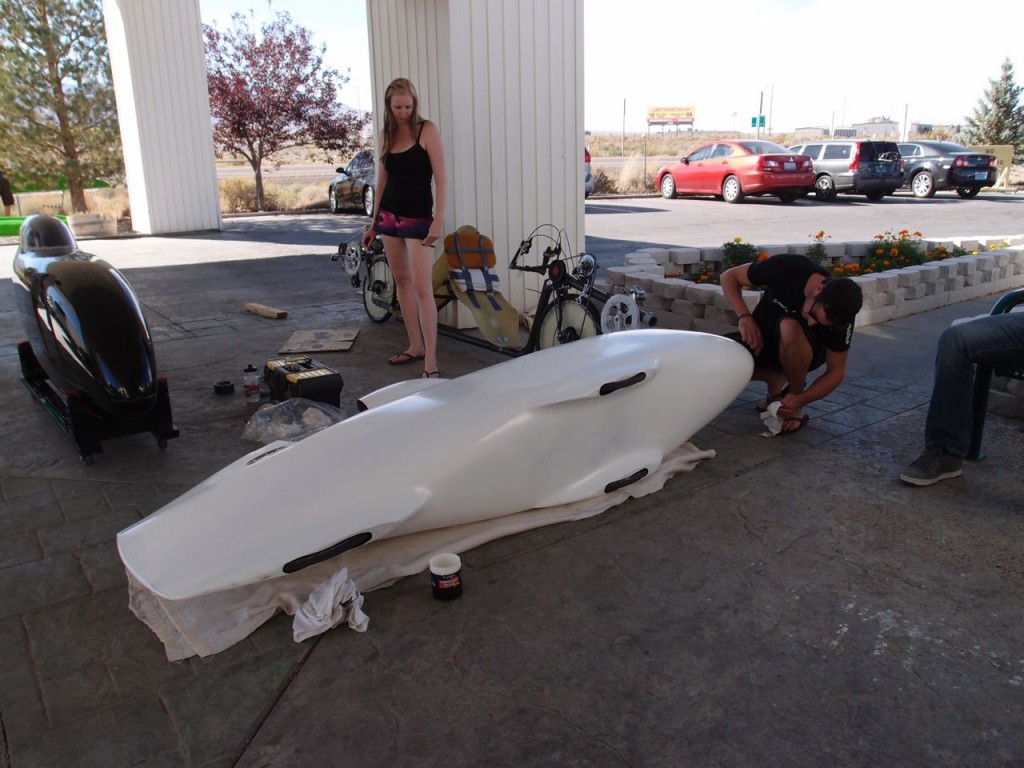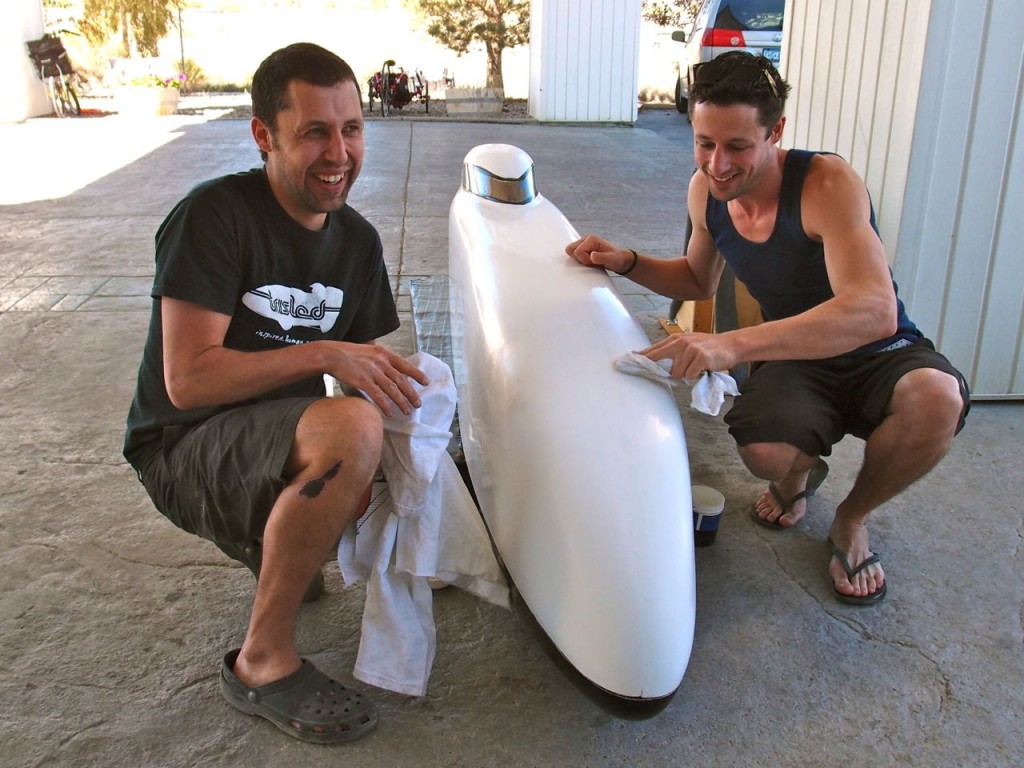The criticism of the rigid tricycle format, which most velomobiles are based on, comes from the limited stability when cornering sharply at speed. The trike usually has the advantage of a mechanically elegant and simple steering or drive, comparable to a bicycle, with additional stability provided by the third wheel. On snow, ice and loose ground the trike is very stable when compared to a bike, as it will slide rather than fall. On hard ground however the bike has the advantage, being able to lean into curves. As a result the industry is beginning serious exploration of alternative designs with the potential to overcome this limitation.
 Some designs and ideas were presented at the recent Velomobile Seminar. One solution is to take the mechanically simple trike layout and “improve” it by adding some kind of tilting function to counter the overturning force. For example the new VeloTilt design. There are arguments for and against, and challenges to over come but development work is moving ahead. Another alternative is to add an extra wheel to gain the stability of a quadricycle as illustrated by the Quatro.
Some designs and ideas were presented at the recent Velomobile Seminar. One solution is to take the mechanically simple trike layout and “improve” it by adding some kind of tilting function to counter the overturning force. For example the new VeloTilt design. There are arguments for and against, and challenges to over come but development work is moving ahead. Another alternative is to add an extra wheel to gain the stability of a quadricycle as illustrated by the Quatro.
Four wheel velomobiles are not new. Indeed many of the early “pedal cars” were four-wheelers. Mochet’s Velocar was originally designed on the behest of his wife so that his son would have a stable machine, and therefore safe in her view, on which to go out riding with his friends. The recumbent advantage was only discovered by accident as it were, once the Velocar was being used alongside other cycles.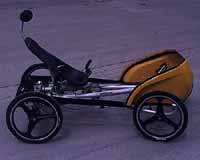
An increasing number of modern quadricycles are starting to make an appearance some with velomobile features. One-such is the Zampano by Designwerks from Germany. At least one prototype has been produced and is illustrated here. Designwerks website is professionally produced in German, but there is little information on the present status of the project, or what if any plans there are for manufacture and sale.
Based on Google Translate the Zampano website states:
This innovative vehicle combines the benefits of the bicycle, car and public transport in one product without being unnecessarily burdened by their disadvantages. It consists of aluminum and high-tech materials such as carbon fiber, Makrolon and Goretex, is powered completely emission-free, has no parking spaces, is all-weather-resistant and also encloses its users. … Depending on the version an option for an electric motor will be available this fall. The time is ripe for a solution like this.
The German text also makes reference to a Manfred Klauda and Tretauto GmbH Munchen. If anyone can add more information please do so in the comments below.



